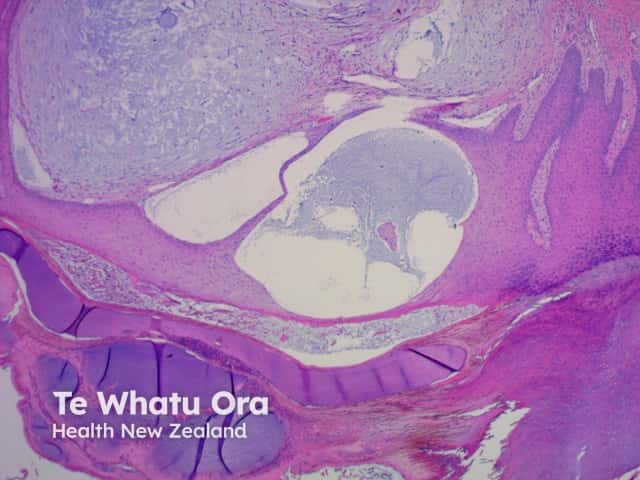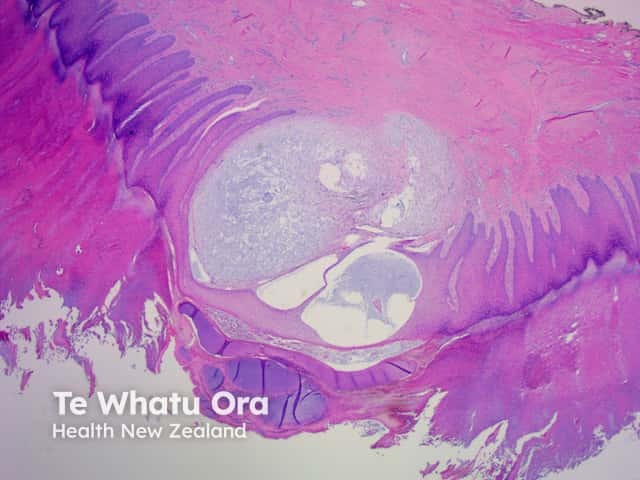Main menu
Common skin conditions

NEWS
Join DermNet PRO
Read more
Quick links
Lesions (benign) Diagnosis and testing
Author: Dr. Abdurrahman Almurayshid, Faculty Member at Prince Sattam Bin Abdulaziz University, College of Medicine, Dermatology, Saudi Arabia, 2015.
Digital myxoid pseudocyst is also known as a digital mucous cyst. It is a focal collection of mucin under the skin, and is commonly seen on the distal aspect of the fingers. It is usually a solitary lesion that is skin coloured to translucent.
The corresponding nail can show a grove or structural changes as a pressure effect of the pseudocyst. Osteoarthritis can accompany it, when it is regarded as a type of ganglion. There can be multiple pseudocysts in patients with chronic arthritis. Treatment is mainly to evacuate the content or to remove the cyst using destructive methods or surgery.
Digital myxoid pseudocysts can be of two varieties: myxomatous and ganglion.
Mucin appears slightly bluish in routine hematoxylin and eosin stained slides.

Figure 1

Figure 2

Figure 3
Colloidal iron, Alcian blue, and toluidine blue stains are used to highlight the mucin.
Focal cutaneous mucinosis.